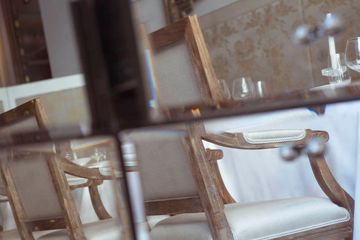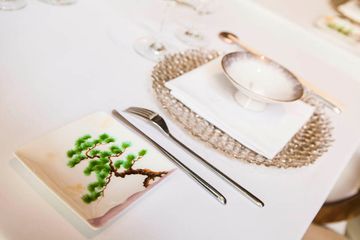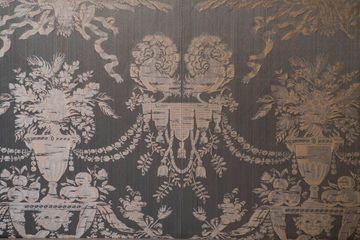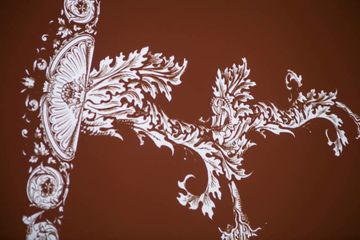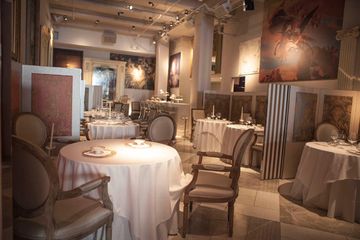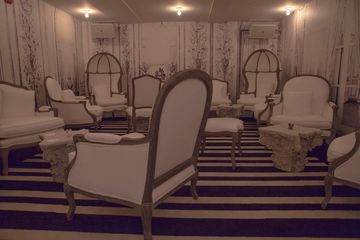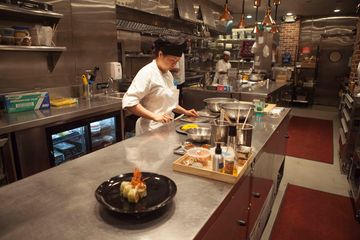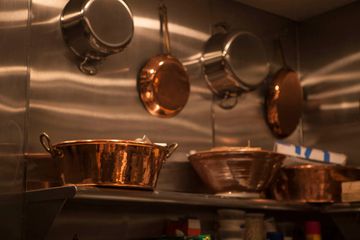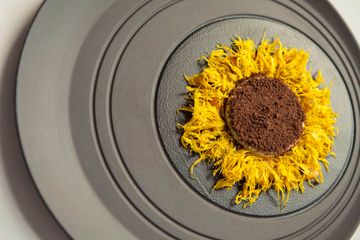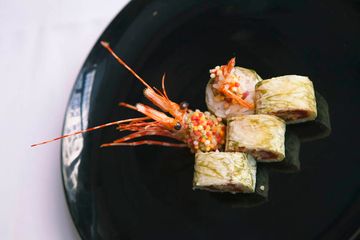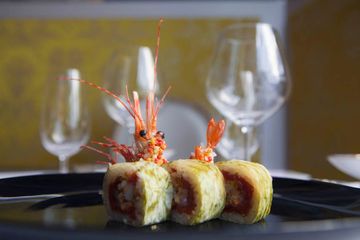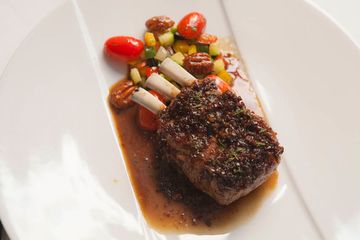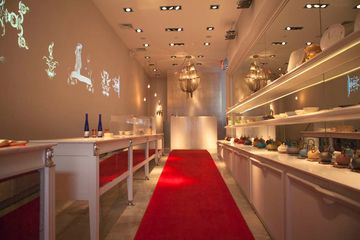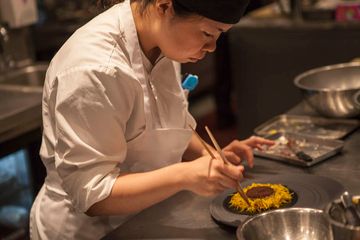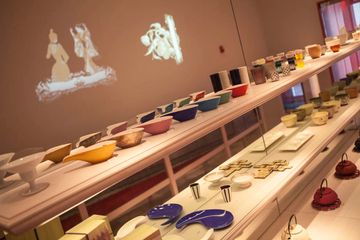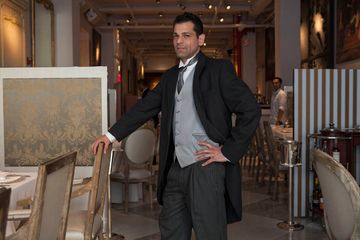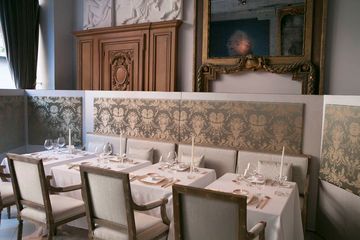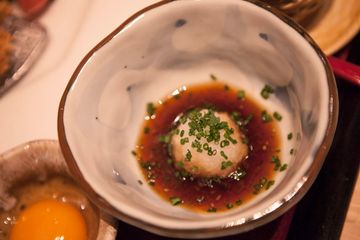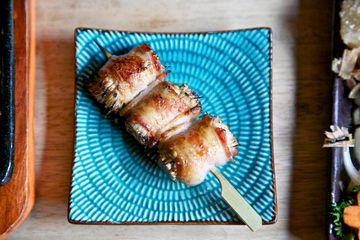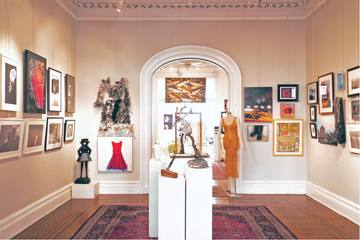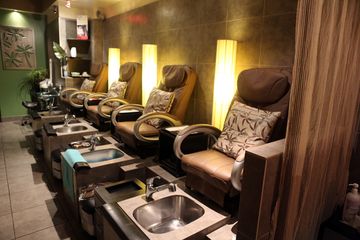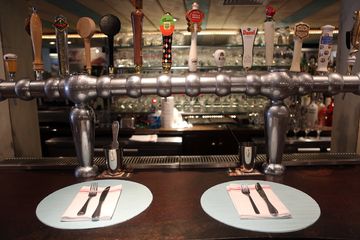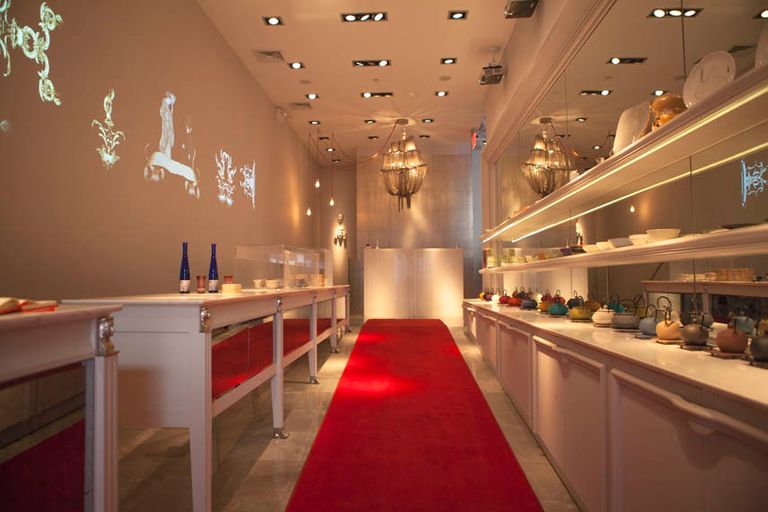
21 grams was an experience that took five of us into an uncharted culture and left us not only deliciously sated, but also feeling like a welcomed and valued friend. On our first venture inside, we were working - exploring the restaurant, taking photos and observing the chef in the kitchen. Our second visit was to participate in the entire dining experience. Words cannot possibly do justice to the absolutely incredible 8 course, Franco-Japonaise works of art we consumed. With each bite, we all went silent and then looked up at each other in amazement only to find the same looks of awe on all of our faces. From the fresh rolls served with brown butter to the hollowed eggshell filled with the most decadent chicken consomme imaginable resting on an aromatic bed of lavender salt...to the potato truffle croquette with a molten cheese center, probably one of the best bites of food I have ever eaten...to the tuna tartar "sandwich"...to the thoughtfully-crafted vegetarian dishes...to the outrageous cocktails including an iced sake intermezzo...and dessert that was over-the-top chocolate souffle...we were positively dazzled. This was a meal, served by expert waiters in tailcoats, the memory of which will stick with us as we continue indulging our way across the side streets.
Dancer, set designer, costume designer, clothing designer, stylist, sculptor, holistic nutritionist, certified edomae-sushi chef, restaurateur – Mihoko Kiyokawa is an incredibly talented woman. And, perhaps, nothing proves this more than stepping inside her magnificent restaurant where her goal is to feed the soul through the passionate preparation of elegant food. Entering the restaurant, one walks down a narrow red-carpeted hallway, ornamented with clean-lined Japanese pottery and projections on the white walls. Tastefully displayed are an array of handmade Japanese teapots, dishes and other beautiful pieces, many created by Mihoko, herself. This exquisite welcoming is simply a taste of what is to follow. The main dining room contains a mixture of Japanese-French aesthetics. Each table is surrounded by a padded barrier -- reminiscent of a gift box. We found it to be dramatic and unique, paying homage to Mihoko’s former career in stage design and dance. Perfectly set, each tablecloth is pressed and glistens with shiny cutlery and ceramics – a bowl with a minuscule towel rests in the middle of each setting. When seated, bergamot-scented water will be poured over the small roll for a guest to wash their hands. While the setting is grand and luscious, upscale and ornate, with some of the men dressed in formal tails, everyone made us feel at ease. From the manager, to the bartender, to the sommelier, and even Mihoko, herself, we were greeted warmly. Within this gorgeous and amicable setting, fantastic, complex and savory food was prepared by twenty-five year old chef, Mizuho Hirakawa. We were taken into the kitchen to observe her as she delicately placed chrysanthemum petal after petal around a circle of foie gras to create a sunflower-esque presentation. We watched as she gently placed a rack of lamb on a plate and wiped away any traces of its juices from the rim before serving. As we photographed this edible art, we were invited to taste these delicacies: Foie gras with buck wheat crumble, apricot and chrysanthemum; Botan ebi tempura roll with shrimp, plum, shallot and tomato; lamb Provencal with ratatouille, lemon thyme sauce and candied pecans. Each dish was presented beautifully and the flavors intriguing -- a mix of spices, textures and colors. The Manhattan Sideways team certainly had a memorable experience exploring the extensive space of 21 Grams, including the downstairs lounge and bar, and, of course, speaking to the gracious people who have poured their hearts into 21 Grams – the supposed "weight of the soul."
